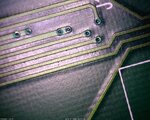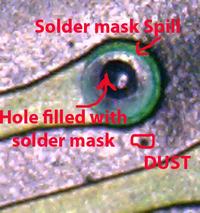ramalakshmi
Newbie level 5
hi all,
I have a problem with vias opening on my PCBs(Double side only), though i have not opened them in solder mask layer they are opening with reddish copper shade on pcbs.while i asked the same with fabricator he is saying the masking ink is going in the hole when is was placed in hot air level.I have obeserved this with many fabricators.how to eliminate this problem:sad:.If any one of you know, pls share with me
I have a problem with vias opening on my PCBs(Double side only), though i have not opened them in solder mask layer they are opening with reddish copper shade on pcbs.while i asked the same with fabricator he is saying the masking ink is going in the hole when is was placed in hot air level.I have obeserved this with many fabricators.how to eliminate this problem:sad:.If any one of you know, pls share with me

